Is data migration a difficult procedure that entails moving data from one location or format to another, necessitating careful planning to avoid data loss, corruption, or disruptions in corporate operations?
Data migration diagrams, or data flow diagrams, serve as visual roadmaps for executing a smooth data movement. These graphical representations provide a step-by-step roadmap for assuring a successful data transfer, reducing potential risks, and preserving the integrity of vital information during the transition.
Key Elements and Components of the Diagram
- Data destinations designate the target systems, whereas data sources indicate the origin databases. Alignment between source and destination components is ensured through data mapping.
- Data transformations include necessary data alterations.
- Data Validation describes quality control measures. Procedures for dealing with problems are outlined in error handling.
- Strategies for unanticipated situations are included in contingency plans.
- Last, Data Flow visualizes the whole path, including all intermediary steps and transformations.
Contents of the article
Benefits of Using a Data Migration Process Flow Diagram
Organizations undertaking data transitions might gain from implementing a data migration process flow diagram in several ways:
- The Migration Process Documentation: They give a recorded record of the migration process, which is extremely useful for compliance, auditing, and troubleshooting.
- Reduced The Error: Data migration diagrams assist in proactively limiting risks and facilitating a smoother migration process by spotting potential difficulties and mistakes ahead.
Steps to make Data Migration Process Flow Diagram
Creating an effective data migration flow diagram involves several critical processes that are essential for crafting a well-structured and thorough plan. These data migration process steps play a very important role in guaranteeing a smooth and successful transition. These steps ensure that no vital aspects are overlooked in the process.
Step 1: Map Data Sources and Transformations
The data migration process flow diagram should be documented with all data sources. This entails lining up the corresponding fields from the source data with those from the destination data. Outline any necessary data transformations that must occur throughout the migration, such as data cleaning, filtering, or aggregations.
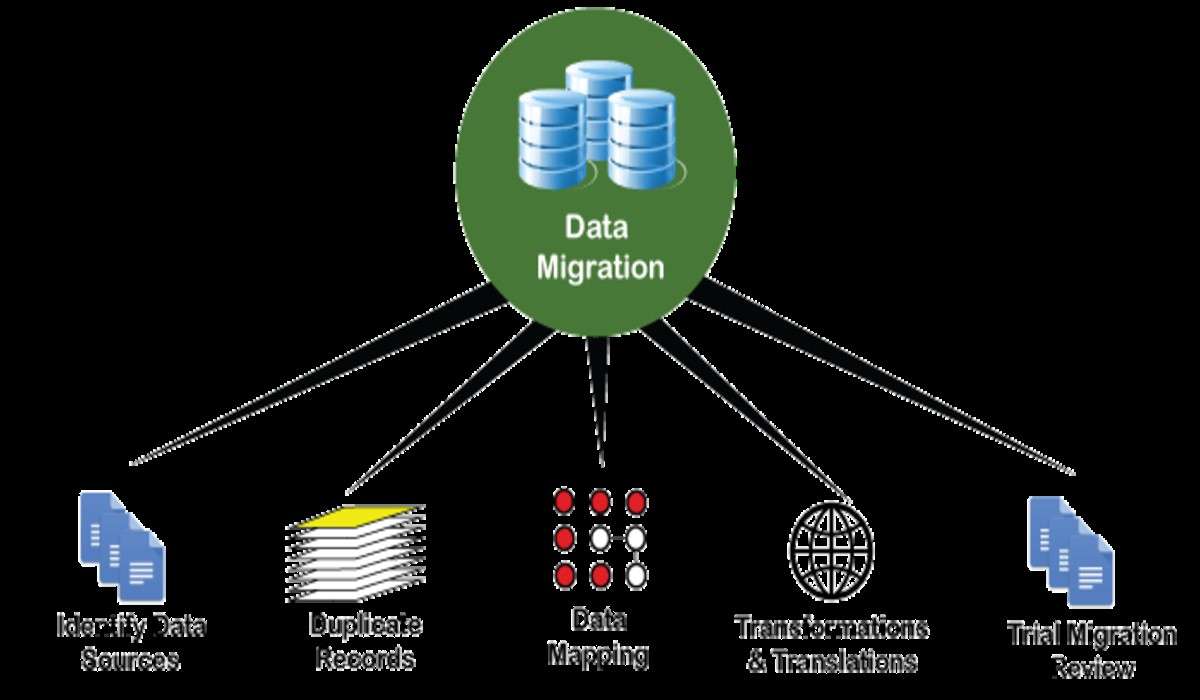
Step 2: Define Method and Resources
You can determine whether the migration will be one-time, phased, or continuous. Determine the hardware, software, and personnel requirements. Make sure you have a budget and a clear timeline in place.

Step 3: Identify your main goals
You must first clearly outline the aims and objectives of your data migration project. What data must be transferred? Why is migration required? What are the expected results? Understanding these questions will guide your entire procedure.
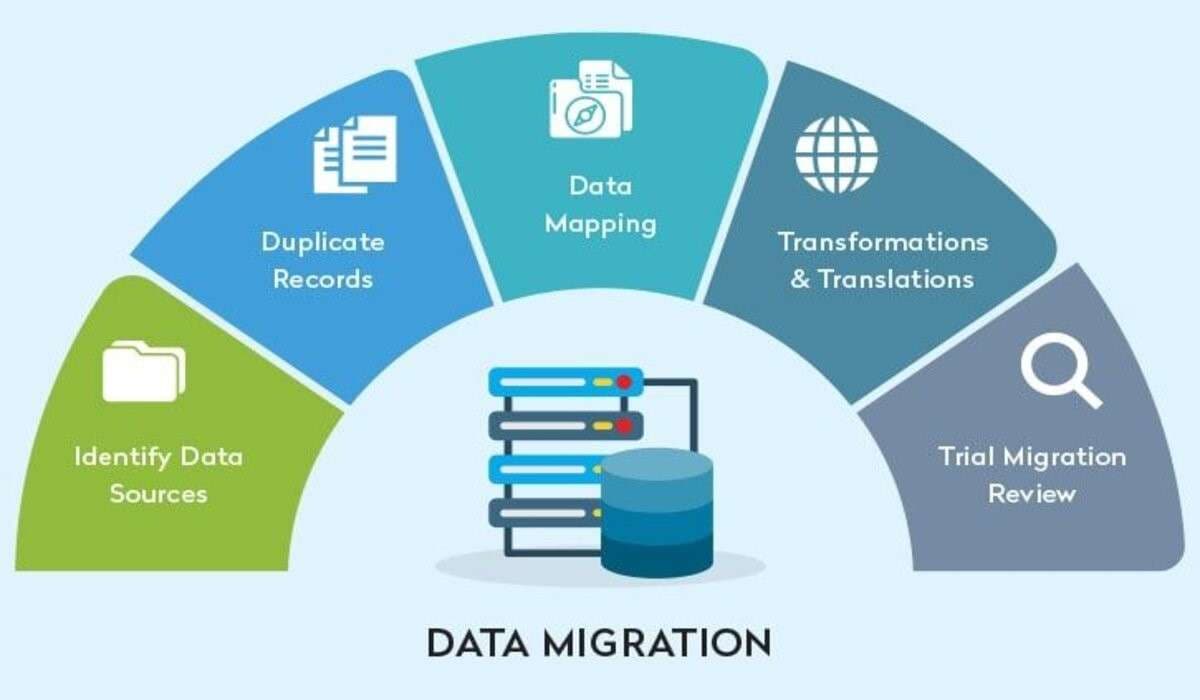
Step 4: Test the Design
It may be tempting to skip the design testing stage, but ensuring the process runs smoothly is better. It is critical to establish the testing strategy for each migration phase. Use high-quality quality assurance tools and resources, and break down each testing phase into smaller components with precise descriptions and expected results.

Step 5: Performance and Migration of Data
The development team implements the migration plan during the data execution and migration phase. There are two approaches: "big bang," which transfers all data simultaneously, and "trickle migration," which migrates data slowly while permitting continued user database access. Vigilant monitoring ensures that the planned course of action is followed.
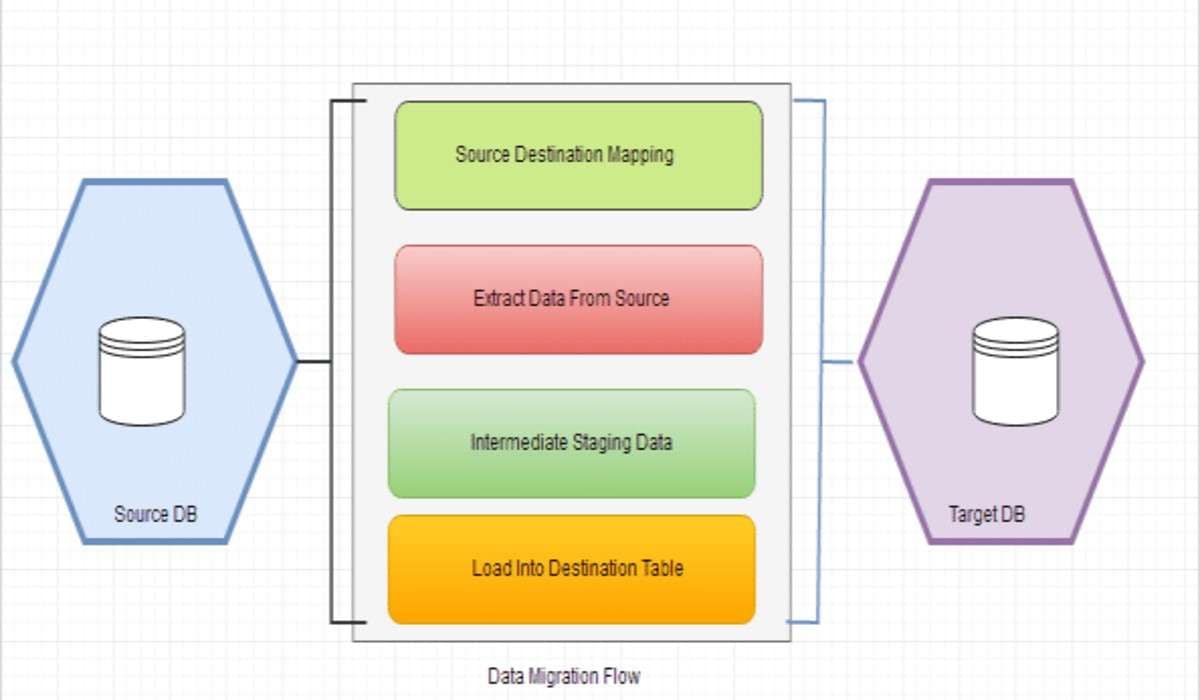
Create a Data Migration Diagram with Wondershare Edrawmax
You may explore the possibilities of tools such as Wondershare EdrawMax to execute your data migration plan properly. This tool simplifies the process with its user-friendly interface, customizable tools, and multiple output formats. It also guarantees that all critical parts of your data transfer strategy are appropriately represented.
Here are the steps to create a data migration diagram or data flow diagram with the Wondershare EdrawMax application:
Step 1: Open the EdrawMax application on your computer.
Step 2: Click on "File" in the menu bar. Choose New> Basic> Flowchart.

Step 3: Browser through the Template Gallery. In the template selection window, type "data migration" in the search bar or browse through the available templates. Select a suitable data migration template and click "Use Immediately" to open it.
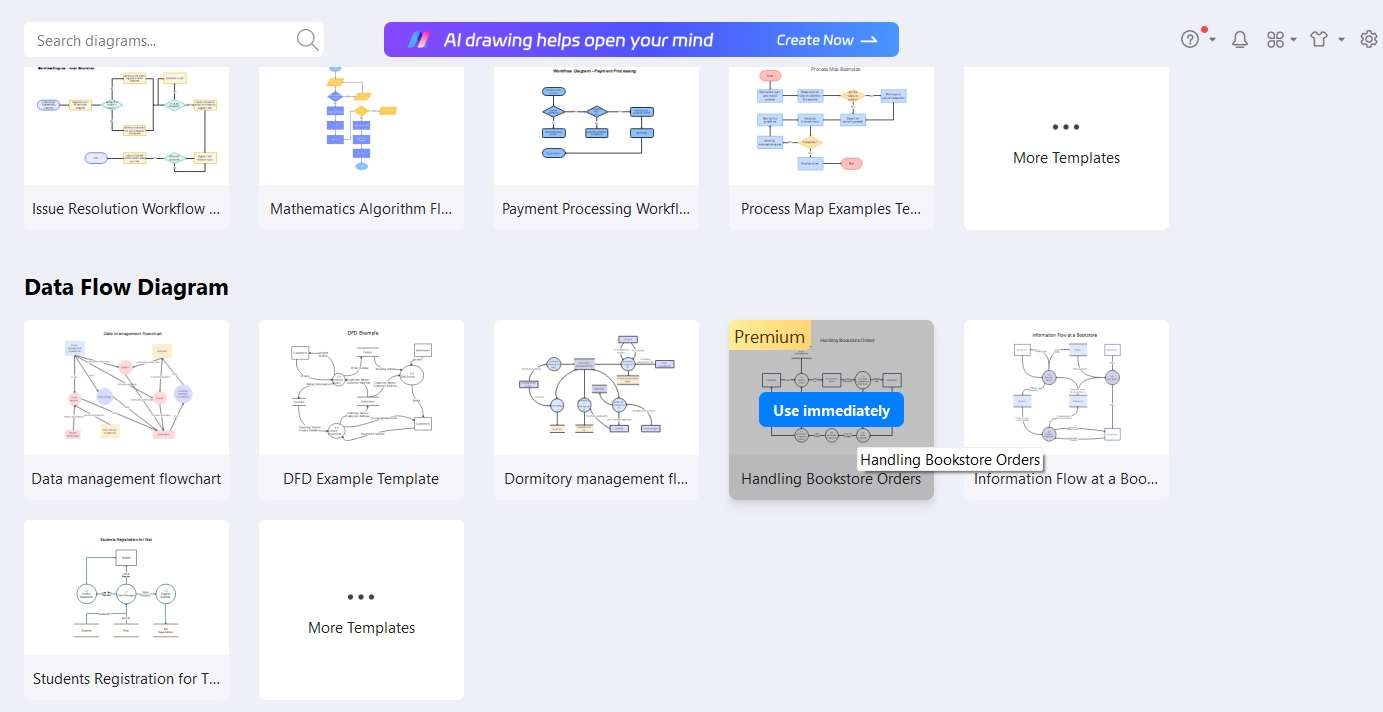
Step 4: On the left sidebar, you'll find a library of shapes and symbols. Drag and drop the appropriate shapes onto the canvas to represent source and target systems, data, and migration processes.
Step 5: Select a shape, right-click, and choose "Format Shape" to customize its appearance. You can change colors, add text, adjust size, etc.
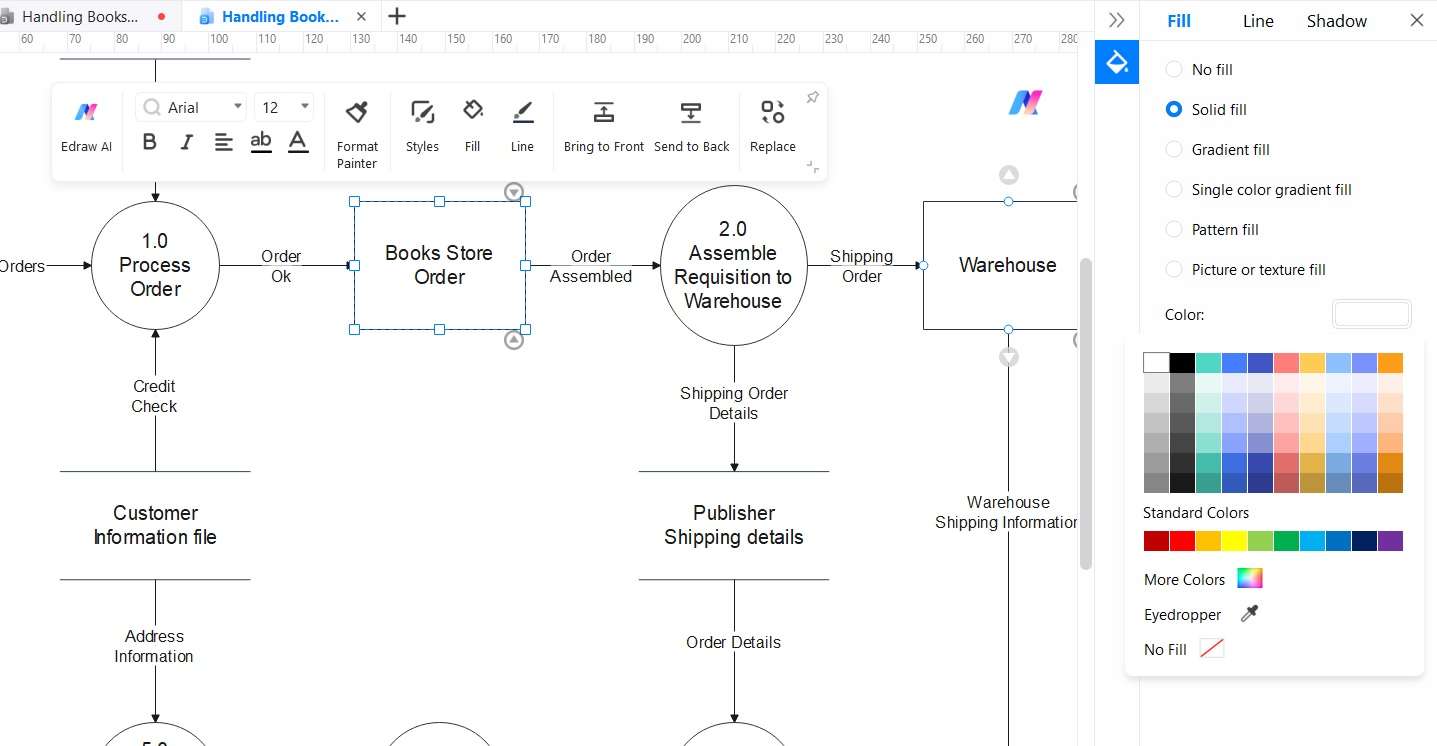
Step 6: If needed, draw arrows or lines to highlight specific data migration paths or relationships. Use the alignment tools to ensure proper positioning.
Step 7: Click on "File" in the menu bar and choose "Save" to save your data migration diagram. Choose a location and provide a name for the file. Once you're satisfied with your diagram, you can export it in various formats (e.g., PNG, PDF) or share it directly from EdrawMax.
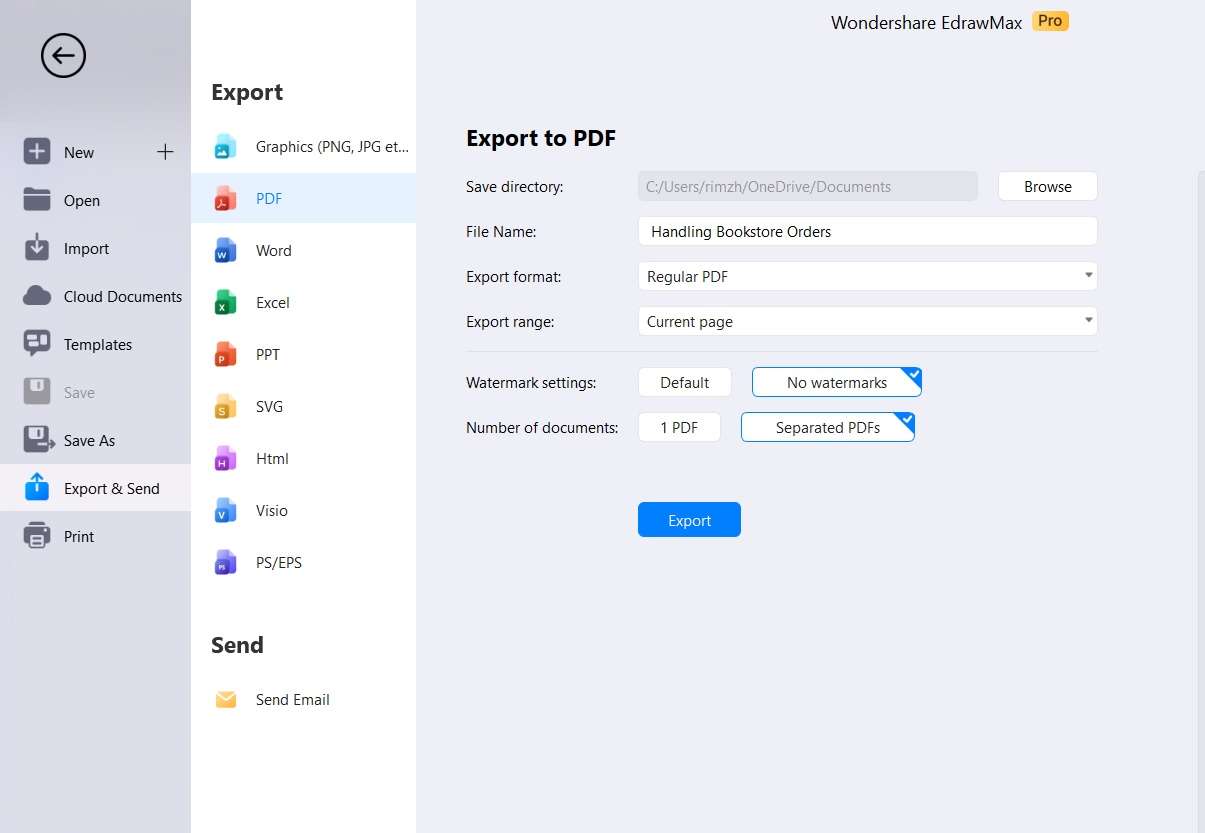
Here were the detailed instructions for creating a data migration process flow diagram specifically using Wondershare EdrawMax.
Compatibility: Windows OS, macOS, Android, iOS, Linux as well as its web application.
Conclusion
Finally, the transfer of information is essential for organizations looking to improve their data architecture. Data migration diagrams are invaluable for clarifying, eliminating errors, easing communication, documenting, and expanding processes. Companies can streamline the process, minimize risks, and confidently achieve their data transformation objectives using a disciplined strategy that begins with goal identification and ends with actual implementation utilizing online tools.
FAQs
1. What are the 4 types of data migration?
The 4 types of data migration are storage migration, database migration, cloud migration, and application migration.
2. What are the three stages of data migration?
Data migration comprises three critical phases: planning (objectives, methods, resources), migration (data transfer with error monitoring), and validation (thorough checks for successful, quality-compliant transfer). These phases ensure a reliable process.




